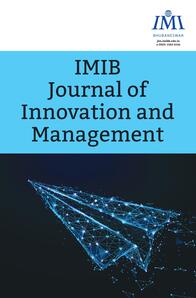
1 Seidman College of Business, Grand Valley State University, L. William Seidman Center, Grand Rapids, Michigan, USA
2 International Management Institute, Bhubaneswar, Odisha, India
This article is distributed under the terms of the Creative Commons Attribution-NonCommercial 4.0 License (http://www.creativecommons.org/licenses/by-nc/4.0/) which permits non-Commercial use, reproduction and distribution of the work without further permission provided the original work is attributed.
Since the economic meltdown in 2008, crowdfunding has emerged as an alternate source of finance for entrepreneurs looking for funds to start or support their venture. Most research in the area of crowdfunding has focused on the determinants of successful funding. To the best of our knowledge, very few studies exist about what happens to a project with an unsuccessful funding on crowdfunding platforms. Do the entrepreneurs who failed to get funding from crowdfunding platform abandon their project or do they persist with it and try to find alternate sources to make their dream come true? In this article, we study the determinants of persistence of an entrepreneur to bring their project to life after failing to receive funding from crowdfunding platforms.
crowdfunding, failure, learning from failure, persistence
Ahmad, N., & Hoffmann, A. (2008). A framework for addressing and measuring entrepreneurship. Retrieved from https://papers.ssrn.com/sol3/papers.cfmabstract_id=1090374
Brown, J. D., & Gallagher, F. M. (1998). Coming to terms with failure: Private self-enhancement and public self-effacement. Journal of Experimental Social Psychology, 28. https://doi.org/10.1016/0022-1031(92)90029-J
Bruton, G., Khavul, S., Siegel, D., & Wright, M. (2015). New financial alternatives in seeding entrepreneurship: Microfinance, crowdfunding, and peer-to-peer innovations. Entrepreneurship Theory and Practice, 39(1), 9–26. https://doi.org/10.1111/etap.12143
Cannon, M. D., & Edmondson, A. C. (2005). Failing to learn and learning to fail (intelligently). Long Range Planning, 38(3), 299–319. https://doi.org/10.1016/j.lrp.2005.04.005
Colombo, M. G., Franzoni, C., & Rossi-Lamastra, C. (2015). Internal social capital and the attraction of early contributions in crowdfunding. Entrepreneurship Theory and Practice, 39(1), 75–100. https://doi.org/10.1111/etap.12118
De Buysere, K., Gajda, O., Kleverlaan, R., Marom, D., & Klaes, M. (2012). A framework for European crowdfunding. European Crowdfunding Network. Retrieved from http://www.infoeuropa.ciejd.pt/files/database/000051001–000052000/000051102.pdf
De Hoe, R., & Janssen, F. (2014). Developing psychological capital to learn and bounce back from entrepreneurial failure. In Fourth International Workshop Entrepreneurship, Culture, Finance and Economic Development. Retrieved from http://www.uni-klu.ac.at/sozio/downloads/ECFED_2014_Final_Roxane_De_Hoe.pdf
Barron, F., & Harrington, D. M. (1981). Creativity, intelligence, and personality. Annual Review of Psychology, 32(1), 439–476. https://doi.org/10.1146/annurev.ps.32.020181.002255
Ferrary, M., & Granovetter, M. (2009). The role of venture capital firms in Silicon Valley’s complex innovation network. Economy and Society, 38(2), 326–359. https://doi.org/10.1080/03085140902786827
Giudici, G., Guerini, M., Rossi Lamastra, C. (2013). Why crowdfunding projects can succeed: the role of proponents’ individual and territorial social capital. Retrieved from http://papers.ssrn.com/sol3/papers.cfmabstract_id=2255944
Greenberg, M. D. (2015). Public online failure with crowdfunding (pp. 333–334). ACM Press. https://doi.org/10.1145/2757226.2764767
Harburg, E., Hui, J., Greenberg, M. D., & Gerber, E. M. (2015). Understanding the effects of crowdfunding on entrepreneurial self-efficacy. Presented at the Computer-Supported Cooperative Work and Social Computing. Retrieved from http://delivery.acm.org/10.1145/2680000/2675142/p3-harburg.pdfip=134.121.102.180&id=2675142&acc=ACTIVE%20SERVICE&key=B63ACEF81C6334F5%2E
3B1D11B7501B70D8%2E4D4702B0C3E38B35%2E4D4702B0C3E38B35
&CFID=929443111&CFTOKEN=41667777&__acm__=1493314521_744ab8ade22afe9270def76d09696911
infoDev. (2013). Crowdfunding’s potential for the developing world. Retrieved from http://www.infodev.org/infodev-files/wb_crowdfundingreport-v12.pdf
Jenkins, A. S., Wiklund, J., & Brundin, E. (2014). Individual responses to firm failure: Appraisals, grief, and the influence of prior failure experience. Journal of Business Venturing, 29(1), 17–33. https://doi.org/10.1016/j.jbusvent.2012.10.006
Kickstarter. (n.d.). TAU CETI: Planetary Crisis: 1st campaign (canceled). Retrieved April 30, 2017, from https://www.kickstarter.com/projects/outerlimitgames/tau-ceti-planetary-crisis
Kuppuswamy, V., & Bayus, B. L. (2015). Crowdfunding creative ideas: The dynamics of project backers in Kickstarter. Retrieved from https://papers.ssrn.com/sol3/papers.cfmabstract_id=2234765
Leoncini, R. (2017). How to learn from failure. Organizational creativity, learning, innovation and the benefit of failure. Retrieved March 28, 2017, from https://media.wix.com/ugd/ddcf9a_6a601cf50ab848e5bd34a08a1f08071c.pdf
Mollick, E. R. (2013). Swept away by the crowd Crowdfunding, venture capital, and the selection of entrepreneurs. https://doi.org/10.2139/ssrn.2239204
Mollick, E. R. (2014). The dynamics of crowdfunding: An exploratory study. Journal of Business Venturing, 29(1), 1–16. https://doi.org/10.1016/j.jbusvent.2013.06.005
Mollick, E. R. (2016). Containing multitudes: The many impacts of Kickstarter funding. Retrieved from https://papers.ssrn.com/sol3/papers.cfmabstract_id=2808000
Schwienbacher, A., & Larralde, B. (2010). Crowdfunding of small entrepreneurial ventures. In Handbook of entrepreneurial finance, Oxford University Press (Forthcoming). Retrieved from http://papers.ssrn.com/sol3/papers.cfmabstract_id=1699183
Shepherd, D. A., & Cardon, M. S. (2009). Negative emotional reactions to project failure and the self-compassion to learn from the experience. Journal of Management Studies, 46(6), 923–949. https://doi.org/10.1111/j.1467–6486.2009.00821.x
Simmons, S. A., Wiklund, J., & Levie, J. (2014). Stigma and business failure: Implications for entrepreneurs’ career choices. Small Business Economics, 42(3), 485–505. https://doi.org/10.1007/s11187–013–9519–3
Wolfe, M. T., & Shepherd, D. A. (2015). ‘Bouncing back’ from a loss: Entrepreneurial orientation, emotions, and failure narratives. Entrepreneurship Theory and Practice, 39(3), 675–700. https://doi.org/10.1111/etap.12057
Yamakawa, Y., Peng, M. W., & Deeds, D. L. (2015). Rising from the ashes: Cognitive determinants of venture growth after entrepreneurial failure. Entrepreneurship Theory and Practice, 39(2), 209–236. https://doi.org/10.1111/etap.12047
Yang, L., & Hahn, J. (2015). Learning from prior experience: An empirical study of serial entrepreneurs in IT-enabled crowdfunding. Retrieved from http://aisel.aisnet.org/icis2015/proceedings/HumanBehaviorIS/21/